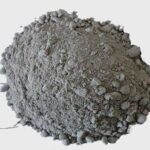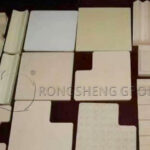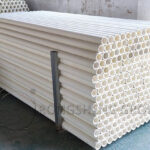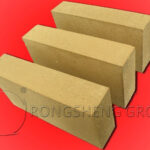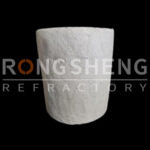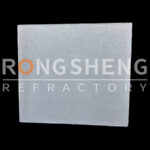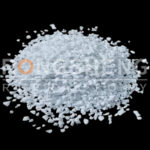Ramming Mass Description
Ramming mass is semi-wet refractory material, which can be applied by ramming method. Compared with plastic refractory, ramming mass has no or very low plasticity, can obtain certain structural strength by heating or sintering. Ramming mass can be classified into semi-wet ramming mass and dry ramming mass. Usually used ramming masses are alumina magnesia ramming mass, high alumina (corundum)-silicon carbide-carbon ramming mass, basic ramming mass and zircon mullite ramming mass.
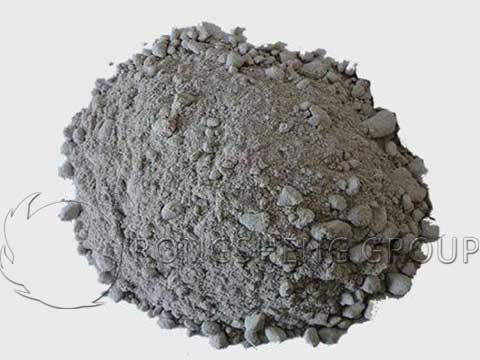
- Alumina Magnesia Ramming Mass
Alumina magnesia refractory ramming mass is semi-wet mixture which’s main components are alumina and magnesia, can be rammed to needed form. The composition of alumina magnesia ramming mass is: 88%~92% of high alumina clinker or corundum, 8%~12% of sintered or fused magnesia sand powder, in additionally, 7%~10% of water glass is added into the raw material. MgO powder can react with Al2O3 and produce magnesia alumina spinel (Al2O3.MgO), which can not only compensate the sintering shrinkage but also enhance high temperature slag permeation resistance and corrosion resistance.
Alumina magnesia ramming mass can be used as inner lining of steel ladle, induction furnace inner lining, electric furnace tapping spout inner lining and high temperature vessels which contact with high temperature metal liquid and molten slag.
- High Alumina-Silicon Carbide-Carbon Ramming Mass
High alumina-silicon carbide-carbide ramming mass is the refractory mixture consists of high alumina clinker, silicon carbide, carbon, binder and additives. High alumina-silicon carbide-carbon ramming mass is mainly used in the inner lining of middle and small size blast furnace tapping channel and slag runner.
Al2O3-SiC-C ramming mass physiochemical index
| Item | Index |
| Al2O3 ≥ | 65.0% |
| SiC + C ≥ | 12.0% |
| Bulk Density g/cm3 (1450℃,3h) ≥ | 2.2 |
| Linear change rate % (1450℃,3h) | ±0.8 |
| Modulus of Rupture Mpa (1450℃,3h) ≥ | 4.0 |
| Crushing strength Mpa (1450℃,3h) ≥ | 15.0 |
- Basic Ramming Mass
Basic ramming is made from sintered or fused magnesia sand, binder and additives. Basic ramming can be divided into hydrous and anhydrous types. Hydrous ramming mass adopts poly-phosphate solution as binder, which can effectively prevent magnesia sand from hydration. Hydrous basic ramming mass is mainly used to construct or patch the melting pond and steel tapping spout of electric furnace or open hearth furnace.
Anhydrous basic ramming mass adopts dehydrated tar or pitch, liquid state phenolic resin as binder. The ingredients of anhydrous basic ramming mass is: 86%~90% of magnesia sand, 2%~3% of sintering agent, 3%~7% of pitch powder or graphite powder, 9%~11% of dehydrated tar or liquid state phenolic resin. Anhydrous basic ramming mass can be used as electric furnace bottom and furnace lining material and patching material, can also be used as converter cramming material for the gap between magnesia carbon bricks and permanent lining.
